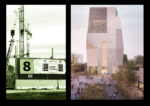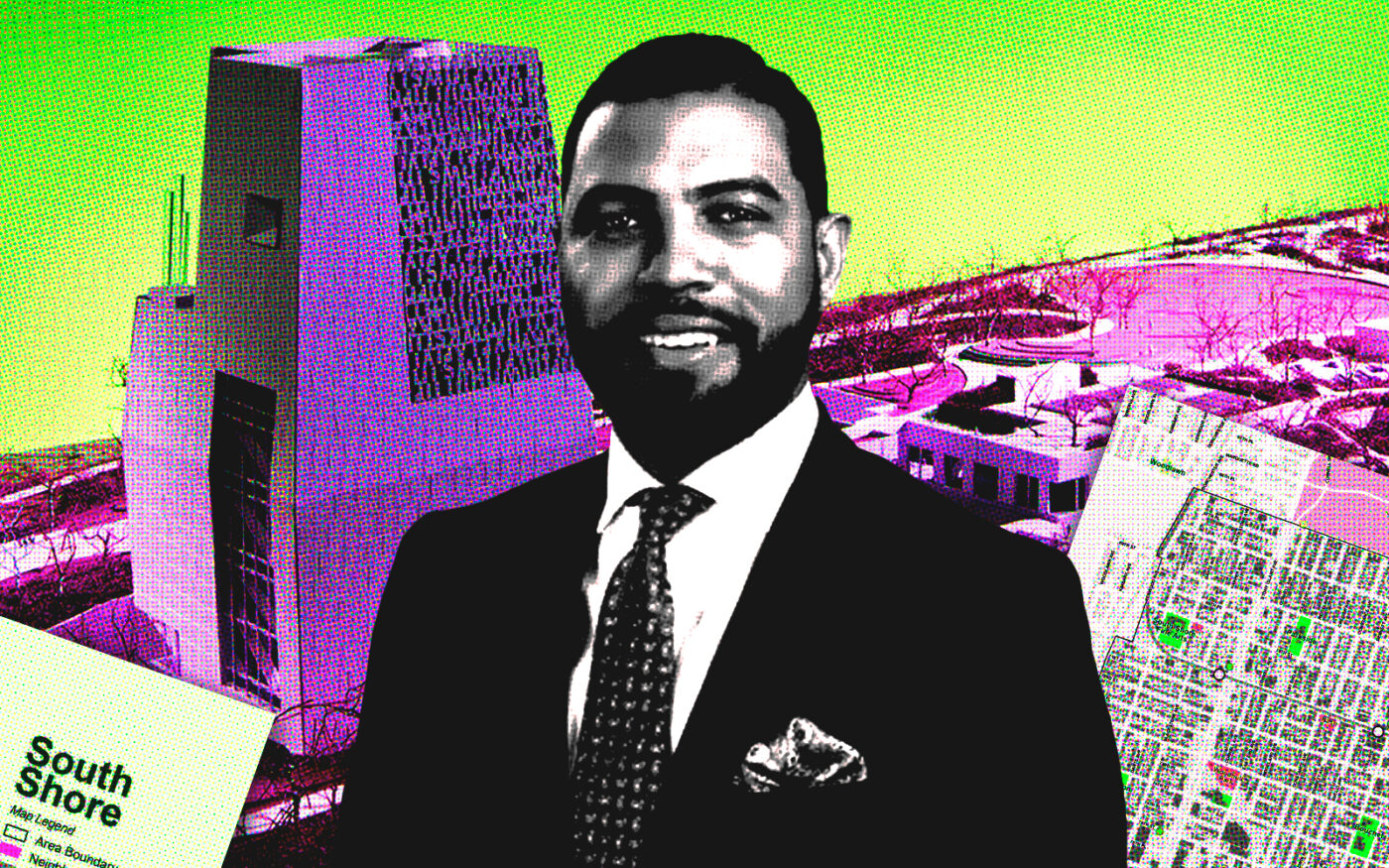South Shore voters signaled they want more protections for longtime tenants and homeowners in their neighborhood as the $500 million Obama Presidential Center’s construction nearby triggers a wave of real estate prospecting that residents fear will drive up rents and taxes and push them out of the area.
Voters last week supported a non-binding referendum — meaning the measure’s passage won’t create a new policy but instructs Chicago aldermen to do so — that requests a new set of housing rules specifically for the South Shore neighborhood.
It follows the passage of a similar measure and subsequent housing ordinance in the nearby Woodlawn neighborhood, where landlords of buildings with 10 units or more must now offer their tenants the right of first refusal to buy the property before listing it or selling it to someone else.
A commercial real estate executive behind the $895 million Woodlawn Central redevelopment plan for 8 acres surrounding the Apostolic Church of God at 63rd Street and Dorchester Avenue is on board with the restrictions in the neighborhoods near his project and the Obama Center.
“Our city has an opportunity to embrace all the enthusiasm and benefits (the Obama Center) intends to bring into a submarket where the majority of residents are experiencing extreme levels of economic hardship,” Transwestern’s JC Griffin, who was hired by lead developer J. Byron Brazier to represent the Woodlawn project, said in a statement.
“To do this, an agreement must be in effect that focuses on supporting residential stability and upward mobility simultaneously,” Griffin said.
Facilities at the Obama Center’s 20-acre lot — to include a museum, library and educational center — won’t start to open until late next year, but the massive development honoring former President Barack Obama has already spurred a level of investment South Shore hasn’t experienced in decades.
It’s not the first time South Shore voters have spoken up about the need for more real estate regulation in recent years. Tuesday’s election was the second time a non-binding referendum on the ballot passed with overwhelming approval in select precincts, this time in the 7th Ward led by Alderman Greg Mitchell. Just under 77 percent of voters supported the proposed ordinance, according to preliminary results.
Last year, Aldermen Desmon Yancy of the 5th Ward and Jeanette Taylor of the 20th introduced a measure supported by community groups meant to limit gentrification ignited by the Obama Center in Jackson Park. But it hasn’t yet gotten hearings, let alone a vote, by City Council members.
Meanwhile, South Shore continues to be “ground zero” of Chicago’s housing crisis due to its eviction rate and rising real estate prices, Dixon Romeo of community group We Not Me who supports an ordinance told WTTW.
“It’s very clear that the need is there at the ballot box, the need is there with the data,” Romeo told The Real Deal. “The need is there with every tenant that we’ve talked to that’s being displaced, from every young person at schools in South Shore being pushed out the neighborhood to the homeowners who are struggling to stay in their homes.”
The first referendum came in the 2023 local election and asked the opinion of 5th Ward voters, 88.9 percent of whom supported the proposal. Most of the South Shore neighborhood is contained within the 5th Ward.
In addition to offering tenants the right of first refusal for apartment building purchases, the Woodlawn ordinance also set aside several million dollars for preserving affordable rental housing, and requires units built on city-owned vacant land to be affordable to renters making 30 to 50 percent of the area median income. South Shore voters have pushed to set aside all city-owned vacant lots in their neighborhood for affordable housing development, and require at least three-quarters of the units be reserved for people making between 15 and 30 percent of the area median income, and up to 60 percent of the median income for the other quarter of units.
“I believe the proposed (ordinance) meets the mark in addressing the void that exists currently, while also creating opportunities for thousands of Chicagoans whose livelihood has been deprioritized through the implementation of inconsiderate and generationally detrimental public policy over several decades,” Griffin said.
His client Brazier’s Woodlawn Central is set to bring a mix of affordable and market rate housing to the area with 800 total units. Griffin is also working with a California-based investor to renovate an 1850s multifamily building on the corner of 75th Street and South Shore Drive in South Shore, which will produce more than 50 affordable housing units, he said.
Read more


“Projects of this caliber will not be successful without the direct and substantial financial support of the government and the communities’ priorities being acknowledged,” Griffin said in his statement.
Romeo said the coalition behind the South Shore ordinance is not against the Obama Center, but wants the city to respond to concerns of displacement with the same urgency it has displayed in welcoming the new development.
The proposed ordinance wouldn’t prevent commercial development in the area, but rather tap into existing programs under the Department of Housing to provide protections for people already being displaced due to “speculative real estate forces,” Romeo said.
